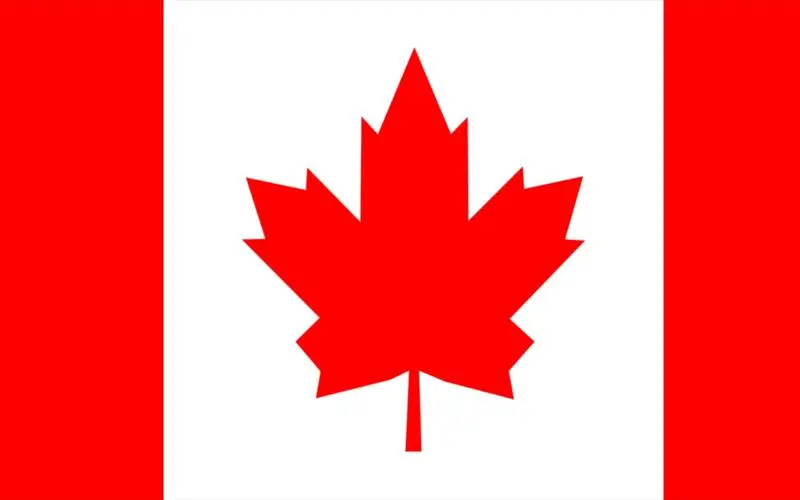Overview of Canada

Canada is located in the northern part of North America, bordering the Atlantic Ocean to the east, the Pacific Ocean to the west, Alaska to the northwest, the mainland United States to the south, and the Arctic Ocean to the north. Its total area is 9.98 million square kilometers, including 9.09 million square kilometers of land, 890000 square kilometers of freshwater coverage, and approximately 240000 kilometers of coastline.
The population of Canada is approximately 40 million (as of June 2023), mainly of European descent such as English and French, with both English and French being official languages. Indigenous residents account for about 5%, while the rest are of Asian, Latin American, African descent, etc. 67.3% of residents believe in Christianity, while 7.2% believe in Islam, Hinduism, Sikhism, and Buddhism.
The capital of Canada is Ottawa, located in Ontario, with an average annual maximum temperature between 15-26 ℃ and a minimum temperature between -16 ℃ and -6 ℃. Canada was originally inhabited by Native Americans and Inuit people, but became a French colony in the early 17th century and was later ceded to Britain. On July 1, 1867, Britain merged the provinces of Canada, New Brunswick, and Nova Scotia into a federation, becoming the earliest self-governing territory in Britain. Afterwards, other provinces also joined the federation one after another. In 1926, Canada gained diplomatic independence. In 1931, it became a member of the Commonwealth. In 1982, the Queen of England signed the Canadian Constitution Act, giving the Canadian Parliament full constitutional and constitutional powers.
Canada has a developed economy and is one of the seven major industrialized countries in the West. Manufacturing, high-tech, and service industries are well-developed, while resource industries, primary manufacturing, and agriculture are the main pillars of the national economy. We rely heavily on foreign trade and are deeply influenced economically by the United States. In 2022, Canada's gross domestic product was CAD 2.17 trillion.
The geographical features of Canada include: the terrain is high in the west and low in the east, with the Rocky Mountains in the west and the St. Lawrence River Valley in the east. The climate is mainly subarctic coniferous forest climate and humid continental climate, while the northern polar region has a polar long cold climate. 80% of Canada's population is located near the US Canada border, with major cities such as Toronto and Vancouver being the most densely populated areas.
The overview of the Canadian economy can be described from the following aspects:
Economic growth situation: In the second quarter of 2024, the Canadian economy grew at an annual rate of 2.1%, higher than the Bank of Canada's forecast of 1.5% in July and exceeding economists' expectations. However, the potential economic growth is expected to decline to approximately 2.4% starting from 2024, and then further slow down to an average level of approximately 1.9% in 2025 and 2026.
GDP Changes: In the second quarter of 2024, Canada's real GDP grew by 0.6% year-on-year, 0.5% month on month, and 2.1% at an annualized rate. In the first half of the year, Canada's nominal GDP increased by 4.5% year-on-year, while its actual GDP increased by 0.7% year-on-year.
Performance of major economic sectors: In the second quarter, employee salaries increased by 1.6%, with strong wage growth in the mining and oil and gas extraction industries. Wages in the fields of healthcare and social assistance, education services, as well as finance and insurance have also increased. There has also been an increase in commercial investment and expenditure, especially in machinery expenses, particularly in aircraft and other transportation related equipment.
Inflation situation: Since March 2021, the growth rate of inflation has been the slowest in over three years. Despite significant increases in essential expenses such as rent, food, and electricity, the prices of passenger cars and electricity have decreased year-on-year, and travel prices have also decreased.
Monetary Policy: The Bank of Canada is expected to further lower its benchmark interest rate by 25 basis points to 4.25% at its September interest rate meeting.
Government spending: Government spending has driven some quarterly growth, due to the increase in civil servant salaries and the increase in working hours at all levels of government.
In summary, the Canadian economy showed some growth momentum in the second quarter of 2024, but the potential economic growth rate has declined, inflationary pressures have eased, and monetary policy has also been adjusted.

